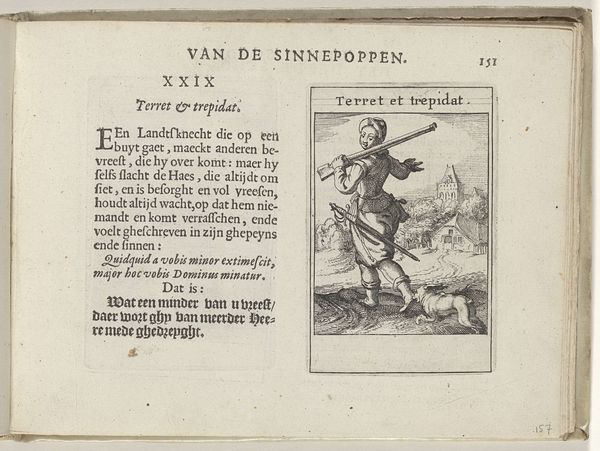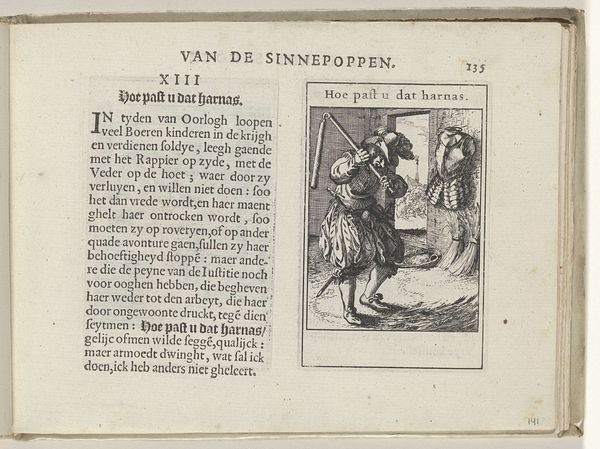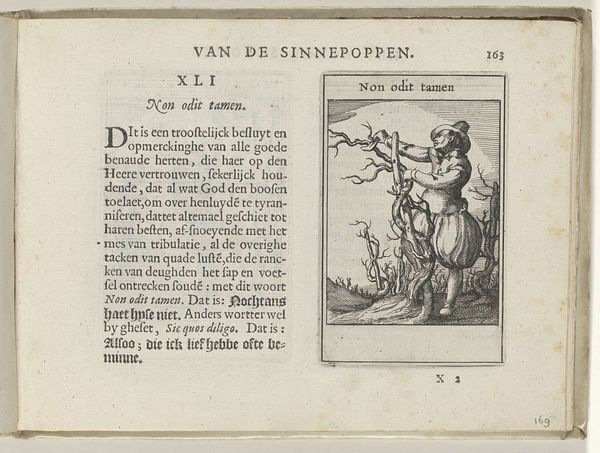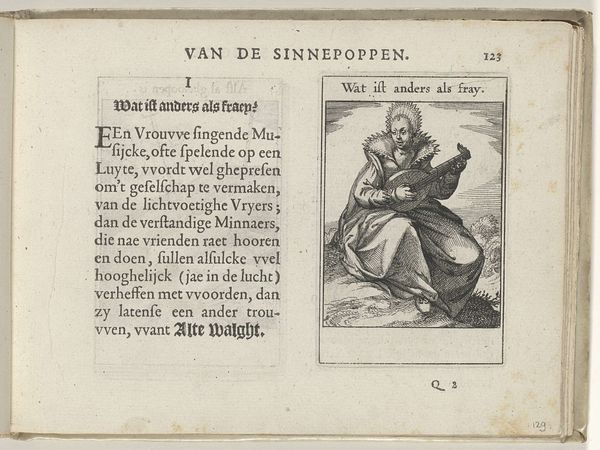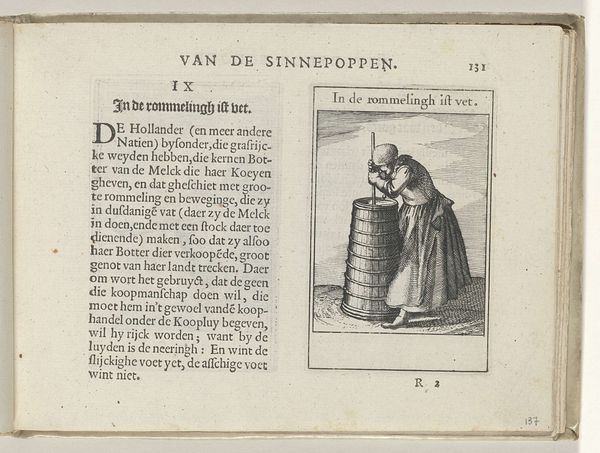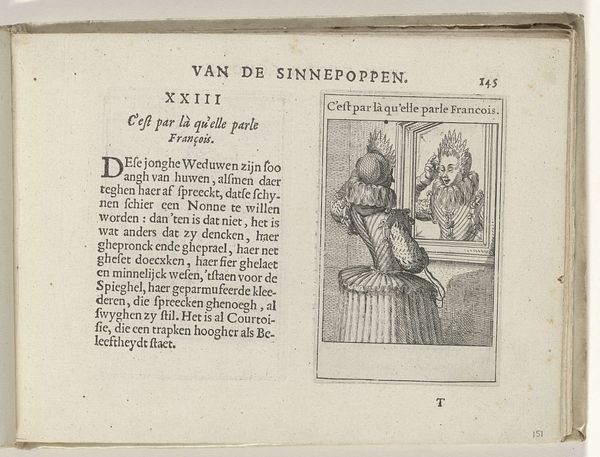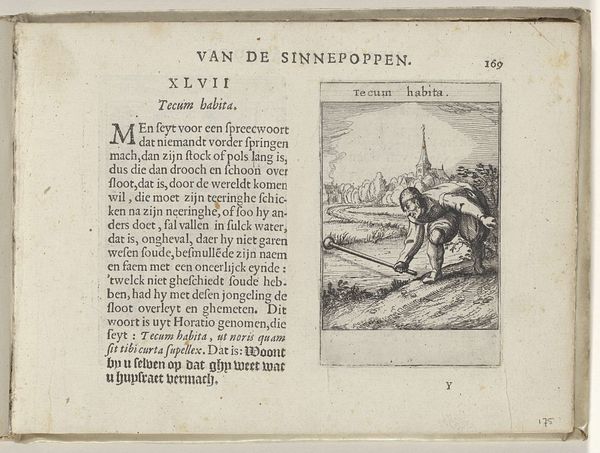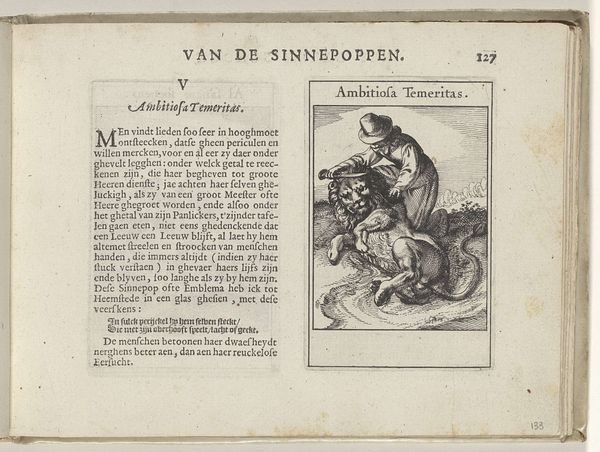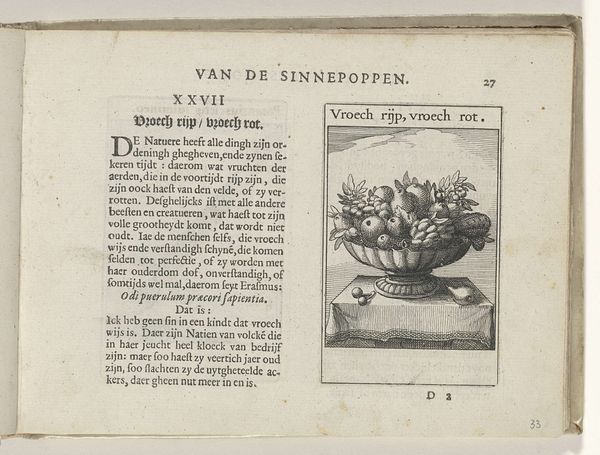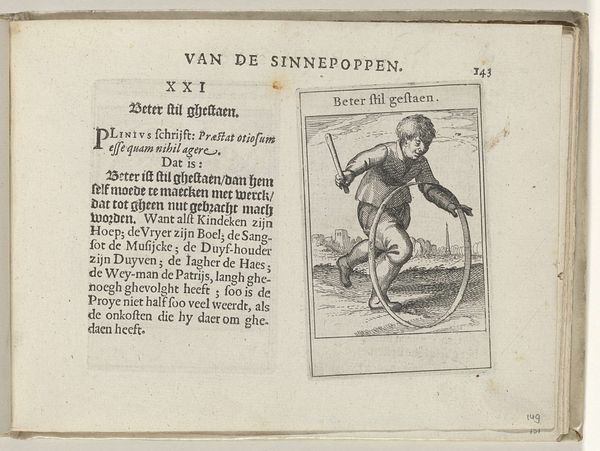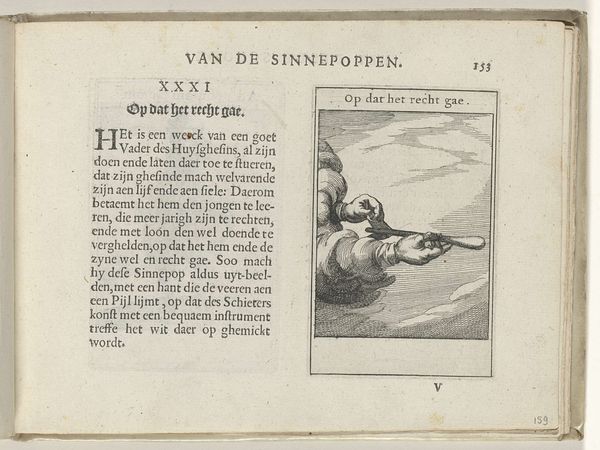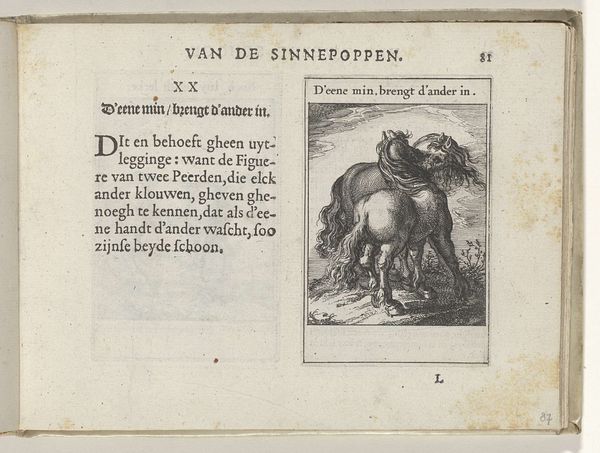
print, engraving
# print
#
figuration
#
11_renaissance
#
genre-painting
#
northern-renaissance
#
engraving
Dimensions: height 137 mm, width 188 mm, height 95 mm, width 60 mm
Copyright: Rijks Museum: Open Domain
Curator: So, this is "VII Gheoeffent derf," an engraving by Roemer Visscher from 1614, currently held in the Rijksmuseum. Editor: It's really intriguing how it's presented within the book! I'm struck by the stark contrast and detail achieved solely through engraving, but there are so many different textures implied in such a small area, it feels so advanced for its time! What specifically catches your eye in this print? Curator: Considering the materiality of printmaking, it’s crucial to look at how Visscher employed the burin to disseminate a specific visual culture. Engravings like these facilitated the circulation of ideas and moral allegories. It begs the question, what socioeconomic forces allowed the image to emerge into the world? Was there a specific audience he was looking to reach? Editor: Good point - how the image circulates really shapes its meaning, doesn't it? Was this type of image commonplace? Curator: Well, such prints were affordable, so fairly commonplace in middle class circles. In terms of content, it serves as a reminder about practicing skills and learning from mistakes; do you think the way the artist approached engraving could, itself, echo this moral message of dedicated effort? Editor: That's a fantastic connection! Perhaps the deliberate and practiced lines of the engraving, representing the "practiced skater", highlight the artist's own mastery of the medium, subtly reinforcing the print's message of continuous effort! It certainly emphasizes the role of labor in creating not just the image but also its meaning. Curator: Exactly! Examining the material conditions and processes gives us a deeper understanding of the artwork. Now that you can observe the process through a different lens, can you expand on some themes you picked up initially? Editor: I now see beyond just the technical skill. Looking at how this print facilitated wider social access to imagery of value is essential to understanding its impact. Curator: Indeed. Considering the image as both a product of and a contributor to the broader material culture of its time unveils layers of meaning that formal analysis alone might miss.
Comments
No comments
Be the first to comment and join the conversation on the ultimate creative platform.
